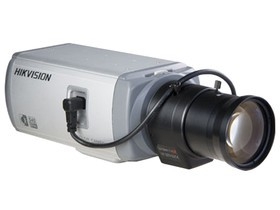Wuxi Security Monitoring Threats and solutions faced by the system
Security cameras and monitoring systems are distributed all over the world, and their use is growing with each passing day. This situation is caused by many factors, including the security and risk mitigation needs of public institutions, the needs of the new insurance industry, and the changing trend of cost reduction but system performance increase.
In the past, monitoring systems often required professional installation, and special cables and discrete power supplies were used. Today, the IP monitoring system is very easy to install and has good adaptability. It can be connected to the existing Ethernet infrastructure through the commonly used CAT5 (Category 5) cable or Wi Fi network.
In addition, by connecting an existing IP camera to a DVR (digital Digital Video Recorder )Or cloud storage services can form a complete system, which can also be remotely monitored on site through any smart phone or other portable devices.
Power over Ethernet (PoE) has also made great progress in the use and power transmission capability, which makes it possible to power and connect the camera only through a single cable, and also reduces the installation cost.

The cameras installed indoors and outdoors can not only be used to protect public places (such as apartments and office buildings, factories, school campuses and personal residences), but also be used to monitor traffic conditions. In all these cases, the connection and disconnection of cables will be threatened by electrostatic discharge (ESD) and cable discharge event (CDE).
The easily damaged circuits include buttons and switches, memory slots, and video output ports. For cameras installed outdoors, video (CVBS or SDI) and data (Ethernet, USB) ports will also suffer severe and repeated lightning transients.
Similarly, video hardware (digital hard disk video recorder/personal video recorder) will also be exposed to the threat of ESD and lightning surge. ESD will be introduced when the video equipment is connected to the video and data ports. In thunderstorm weather, transient can be introduced into power supply (AC/DC) circuit and Ethernet/video port (if connected to outdoor camera).
All these problems are an increasing challenge for hardware designers and manufacturers. With the increase of various device functions, the complexity and sensitivity of chipsets are also increasing. At the same time, designers also face pressure to reduce costs.
In many cases, in the early design stage, few manufacturers will consider transient protection, which will lead to equipment failure easily, resulting in corresponding maintenance costs and handling problems, which will damage their brand reputation. The purpose of protecting components is to reduce transient energy to a safe range, so as to ensure reliable application performance and normal operation of the circuit without interference. For example, it must not reduce the high-speed signal by adding additional capacitance or other nonlinear effects.
![]()






